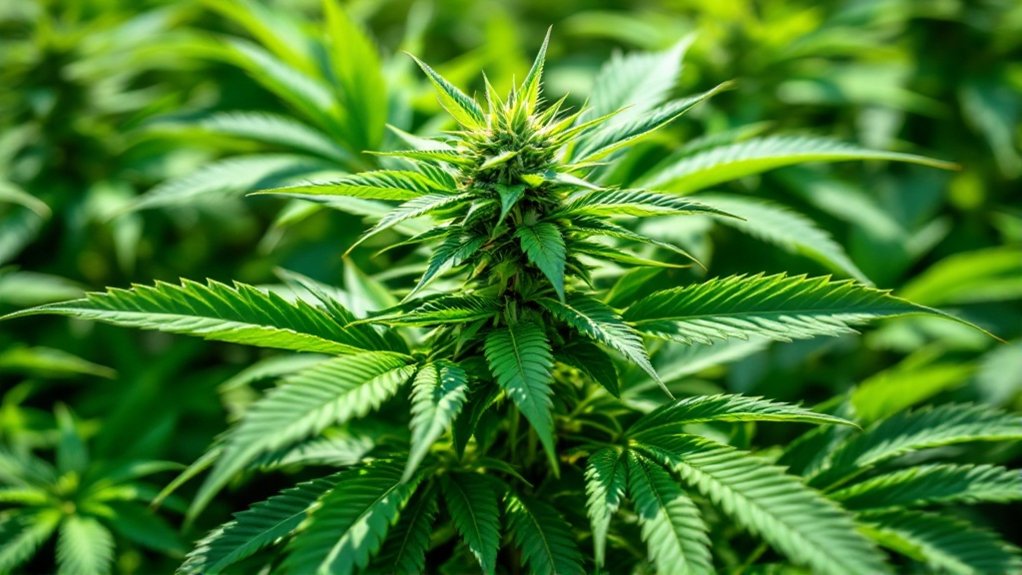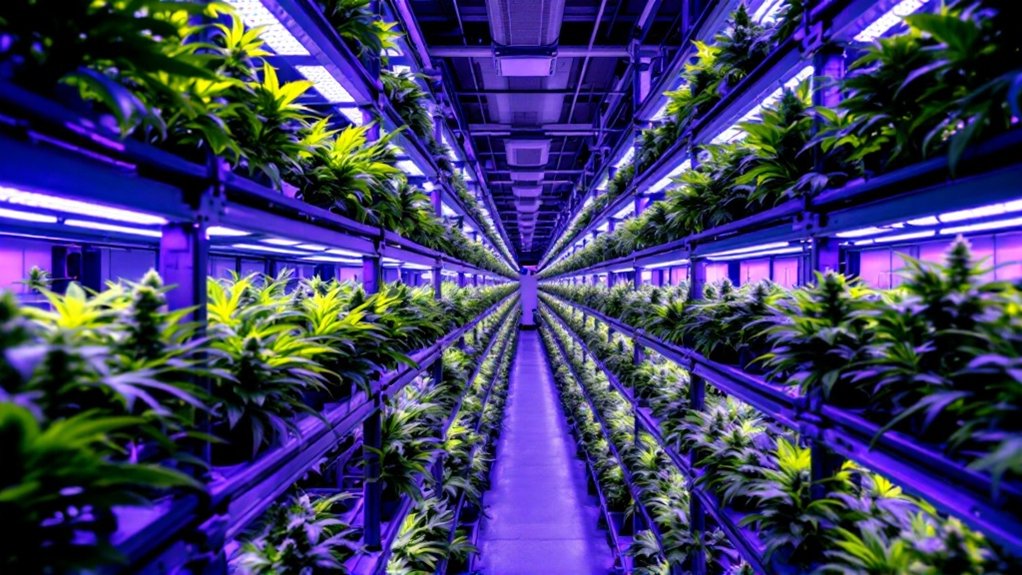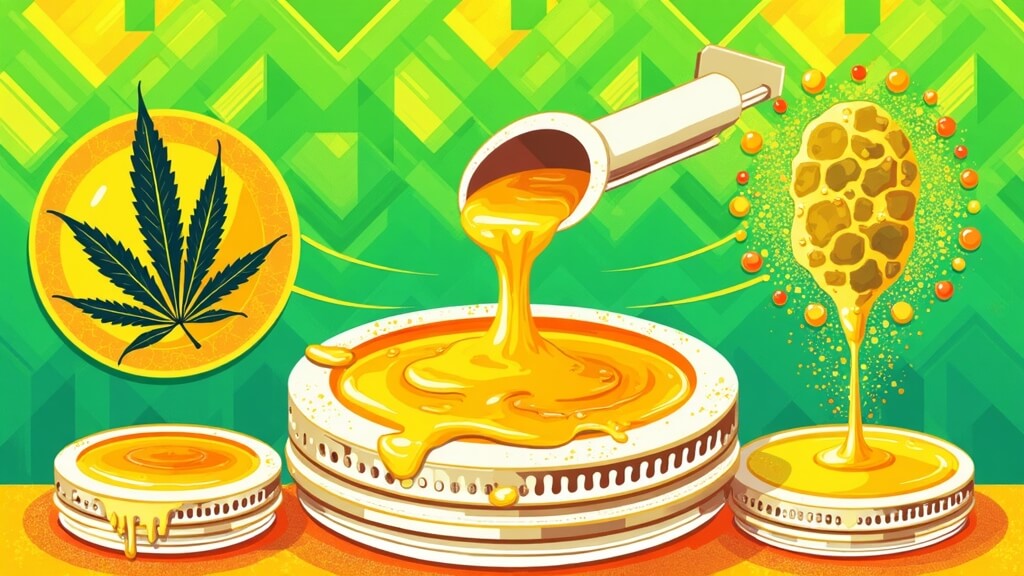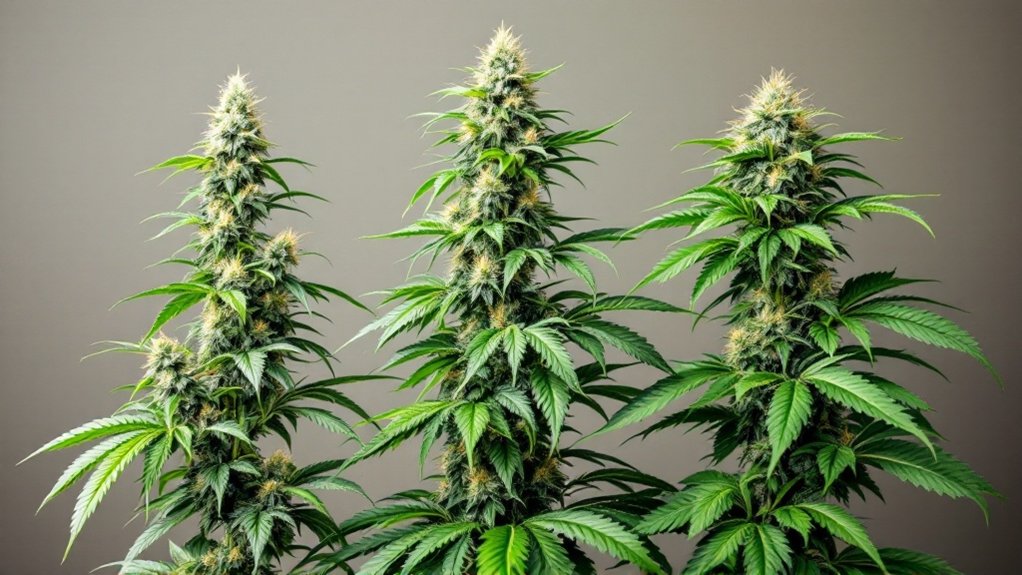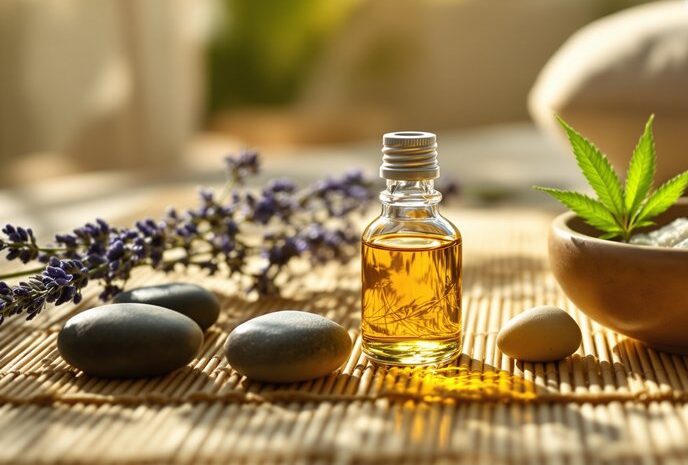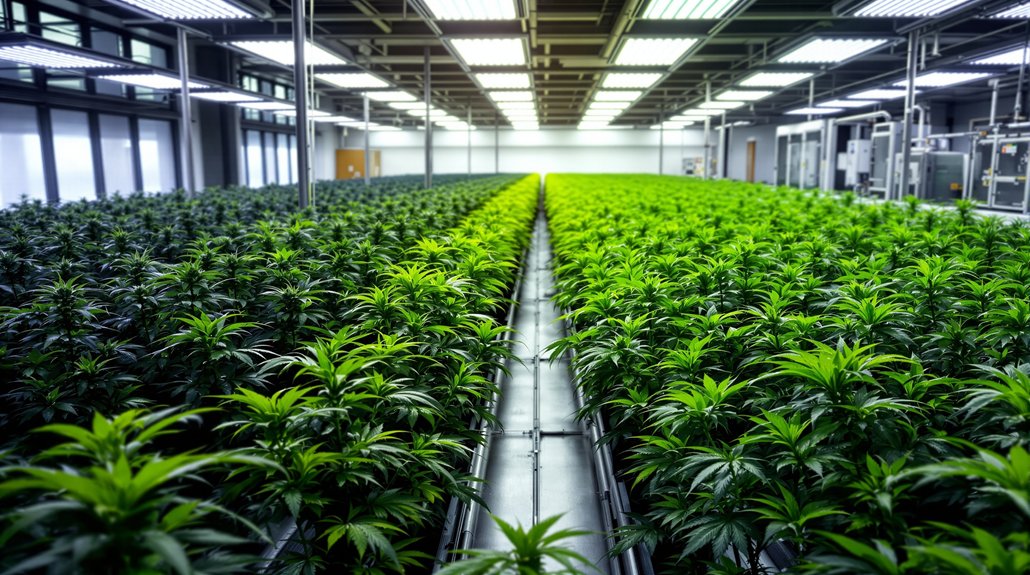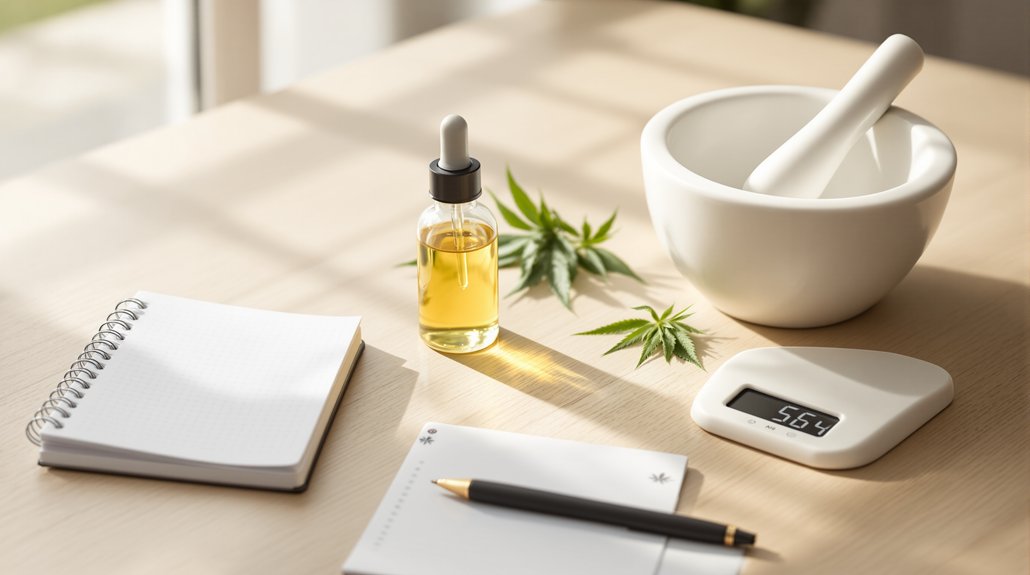A marijuana plant’s leaf count varies dramatically throughout its lifecycle. Starting with just 4-6 true leaves as seedlings, plants explode to approximately 130 leaves during 25 days of vegetative growth. The iconic cannabis leaf isn’t a single leaf but a compound structure with multiple leaflets – typically 5-7 for indica strains and up to 13 for sativas. Genetics and environmental conditions play essential roles. Stress, poor nutrients, and inadequate lighting? Fewer leaves. The plant’s full story unfolds beyond just counting its foliage.
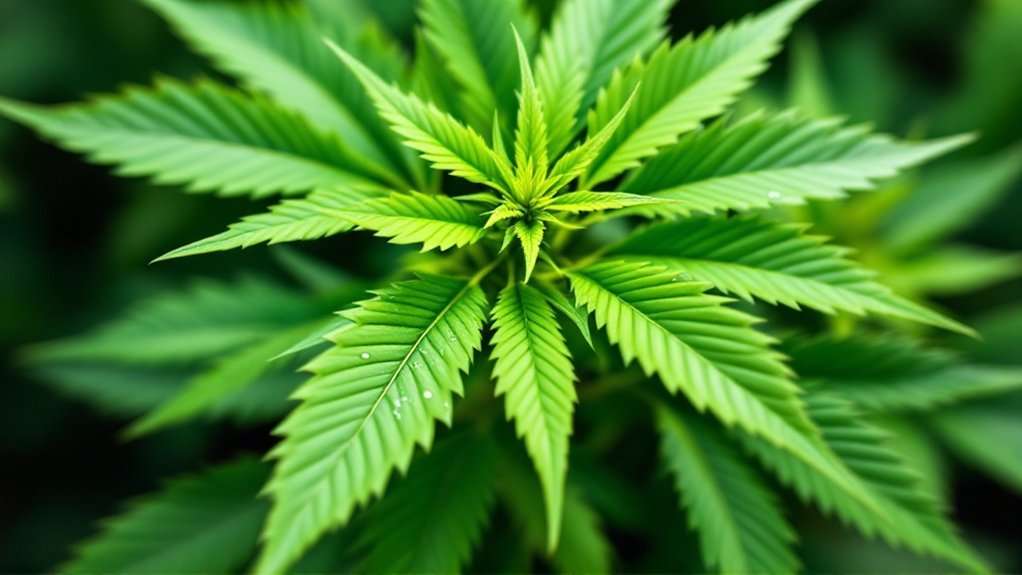
When it comes to marijuana plants, just how many leaves are we talking about? That’s not exactly a straightforward question. The answer changes dramatically throughout a plant’s life cycle and it’s not just about counting green things.
Seedlings start modest, sporting just 4-6 true leaves. Cute little things. But don’t blink. Those youngsters hit their vegetative stride and explode to approximately 130 leaves within 25 days. That’s some serious foliage production. The plant keeps cranking out leaves until it shifts gears to flowering, when leaf production actually decreases. Flowers over foliage.
From 6 little leaves to 130 in under a month. Cannabis doesn’t just grow – it explodes.
Here’s where it gets interesting. What most people call a “marijuana leaf” isn’t technically a single leaf. It’s actually a collection of smaller segments called leaflets. Mind blown? The iconic cannabis leaf typically features five, seven, or nine leaflets, almost always an odd number. Nature’s funny like that. The odd-numbered arrangement isn’t random; it maximizes light absorption. Plants are smarter than they look.
Genetics play a major role in leaf characteristics. Indica strains typically rock 5-7 leaflets per leaf, while sativas can flaunt up to 13 leaflets, with 9 being common. Ruderalis varieties keep it simple with about 5. Different strains, different leaf game. Cannabis varieties offer diverse leaf structures.
Environmental factors throw another wrench in the counting process. Stress a plant, and watch it produce fewer leaflets. Nutrient deficiencies, poor light, temperature extremes all affect leaf development. Same strain, different grow environment? Different leaf count. Maintaining optimal environmental conditions during early growth stages is crucial for developing healthy, abundant foliage.
Cannabis plants also produce different types of leaves. The large, iconic fan leaves handle photosynthesis, while smaller sugar leaves near the buds glisten with trichomes. These sugar leaves contain high concentrations of valuable trichomes that produce the cannabinoids and terpenes responsible for the plant’s effects. Both types serve distinct purposes.
Frequently Asked Questions
Can Marijuana Leaves Be Used for Medicinal Purposes?
Marijuana leaves do contain medicinal compounds, though less potent than flowers.
They’re packed with cannabinoids, terpenes, and nutrients that may offer anti-inflammatory and antioxidant benefits. Some folks juice them raw or brew teas.
Traditional medicine has used them for centuries. Science? Still catching up. Limited clinical data exists, but animal studies show promise.
Legal status varies wildly. Not gonna get you high, though. Clean ’em before consuming, pesticides aren’t medicinal.
How Do Environmental Factors Affect Leaf Development?
Environmental factors dramatically influence cannabis leaf development.
Temperature sweet spot? 20-30°C. Too hot or cold? Leaves suffer.
Humidity levels between 55-80% create lush vegetation, but drop that number during flowering.
Light intensity determines size and quantity, skimp on illumination and watch plants struggle.
Soil nutrients? Absolutely essential. Without proper nitrogen, leaves stay small and sad.
Wrong pH? Nutrient uptake tanks. Mother Nature doesn’t mess around with cannabis cultivation.
What Causes Marijuana Leaves to Yellow or Wilt?
Marijuana leaves yellow and wilt for numerous reasons – some inevitable, others fixable.
Nutrient deficiencies top the list: nitrogen, magnesium, potassium, iron, and calcium all play vital roles.
Environmental stressors hit hard too – over or underwatering, temperature extremes, light issues.
Then there’s the pest parade – root rot, aphids, spider mites.
Don’t forget natural lifecycle factors. Plants naturally yellow during flowering.
Sometimes it’s just genetics. Nature’s cruel that way.
Are Leaf Patterns Useful for Identifying Cannabis Strains?
Leaf patterns offer useful, but not foolproof indicators for identifying cannabis varieties.
Experts can spot the difference: indica plants sport broader, darker leaves with 5-7 points, while sativas display slender, lighter leaves with 7-13 points.
Ruderalis? Tiny things with just 3-5 points.
But here’s the kicker, hybridization has muddied the waters. Pure strains are practically unicorns these days.
For definitive identification, genetic testing trumps eyeballing leaves.
How Do Leaf Trichomes Relate to Potency?
Leaf trichomes directly correlate with cannabis potency, though they’re less concentrated than flower trichomes. These tiny resin factories produce cannabinoids and terpenes, the chemical compounds responsible for marijuana’s effects.
More trichomes generally mean more potency.
Growers monitor trichome color changes from clear to cloudy to amber, indicating cannabinoid development.
Not all glistening leaves equal high-THC content, though. Plant genetics and growing conditions still matter enormously when determining a strain’s actual strength.
